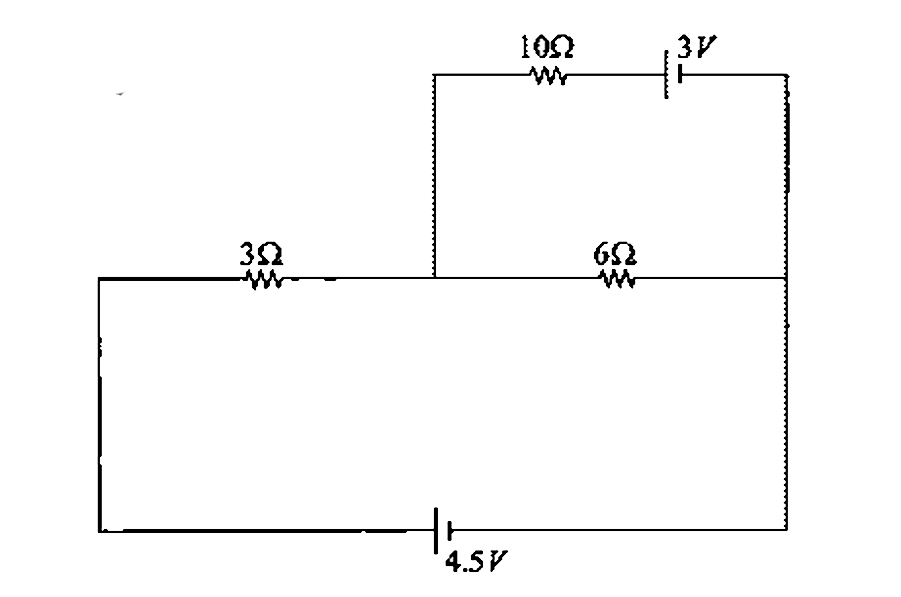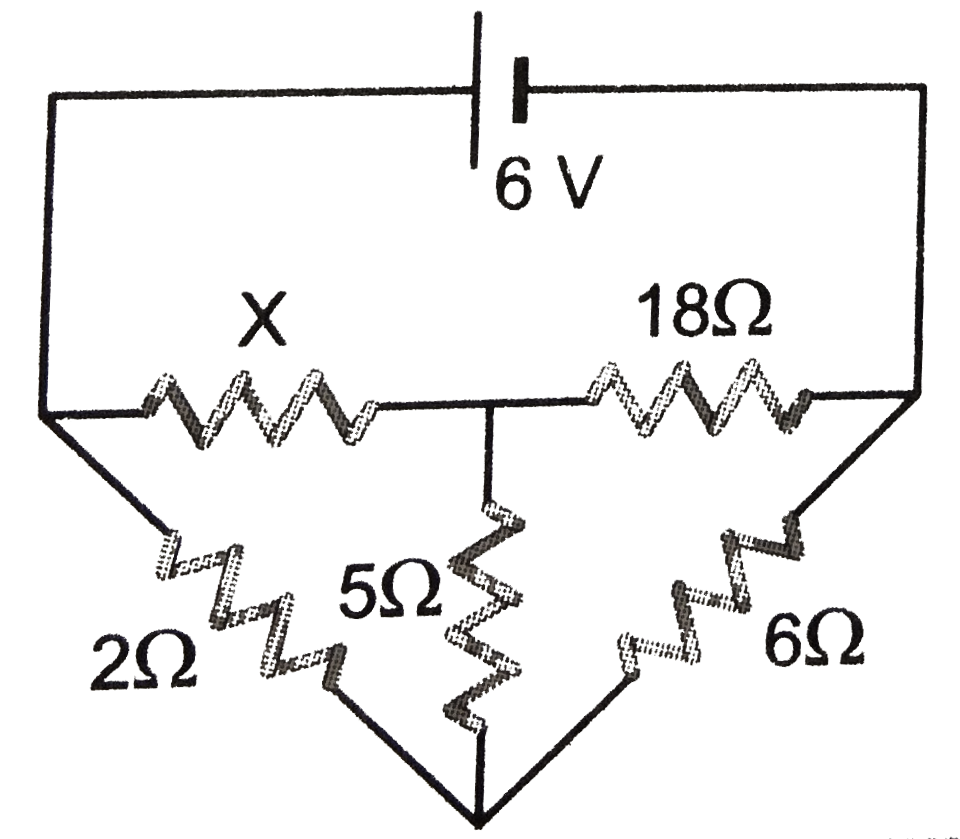(a) Obtain the condition under which the current flowing in the current detecing device used in the circuit shown in figure, becomes zero.
(b) Describe briefly the device, based on the above condition. Draw a circuit diagram for this device and discuss, in brief, how it is used for finding as unknown resistance.
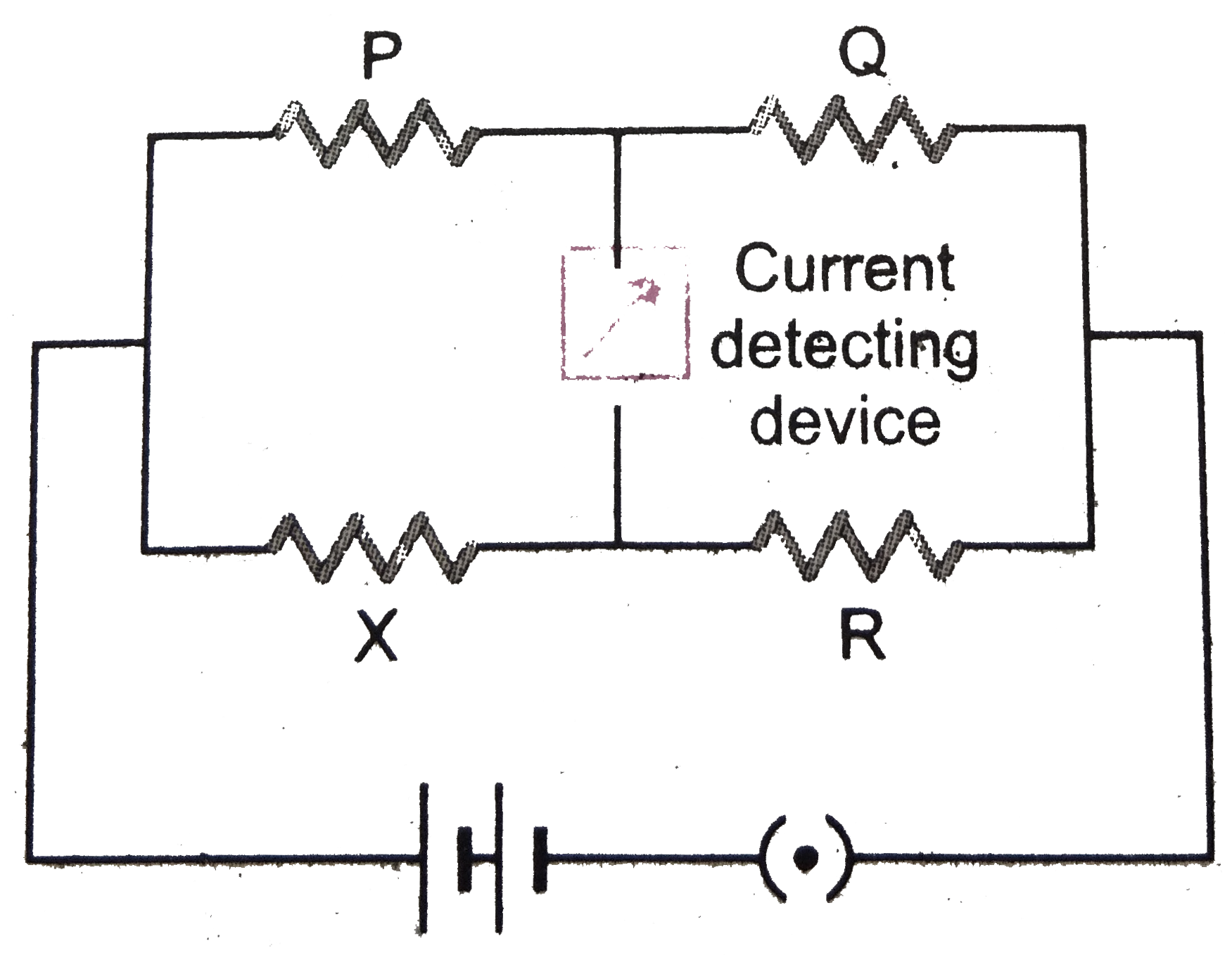
Video Solution
Text Solution
(a) Applying Kichhoff's second law of the loop ABDA, we get,
Again applying Kirchhoff's second law to the loop BCDB, we get
(I1−Iδ)Q−(I2_+Iδ)S−GIδ=0
In the balanced condition of the bridge,Iδ=0. The above equations become
I1P−I2R=0orI1P=12R......(i)
and I1q−i2S=0orI1Q=I2S
On dividing equation (i) by equation (ii), we get
PQ=RS
This proves the condition for the balanced Wheatstone bridge.
(i=b) Metre bridge or slide wire bridge. it is the simplest practical application of the Wheatstone bridge that is used to measure an unknown resistance.
Principal : Its working is based on the principle of Wheatsotne bridge. When the bridge is balanced,
PQ=RS
Construction : It consists of usually one metre long magnanin wire of uniform cross - section, stretched along a matre scale ficed over a wooden board and with its two ends soldered to two L-shaped thick copper strips A and C. Between these two copper strips, another copper strip is fixed so as to provide two gaps ab and the a1b1 . A resistance box R.B. is connected in the gap ab and the unknown resistance S is connected in the gap a1b1.A source of emf ε is connected across AC. A movable jockey and a galvanometer are connected across BD, as shown in figure.
After taking out a suitable resistance R from the resistance box, the jockey is moved along the wire AC till there is no deflection in the galvanometer. This is the balanced condition of the Wheatstone bridge. If P and Q are the resistances of the parts AB and BC of the wire, then for the balanced condition of the bridge , we have
PQ=RS.
Let total length of wire AC=100cmandAB=Icm, ThenBC=(100−l)cm. Since, the bridge wire is of uniform cross- section, therefore,
resistance of wire ∝ length of wire
PQ=resistance of ABresistance of BC
=σlsingma(100−l)=l100−l.
whee σ is the resistance per unit length of the wire.
Hence, RS=l100−l
or S=R(100−l)l
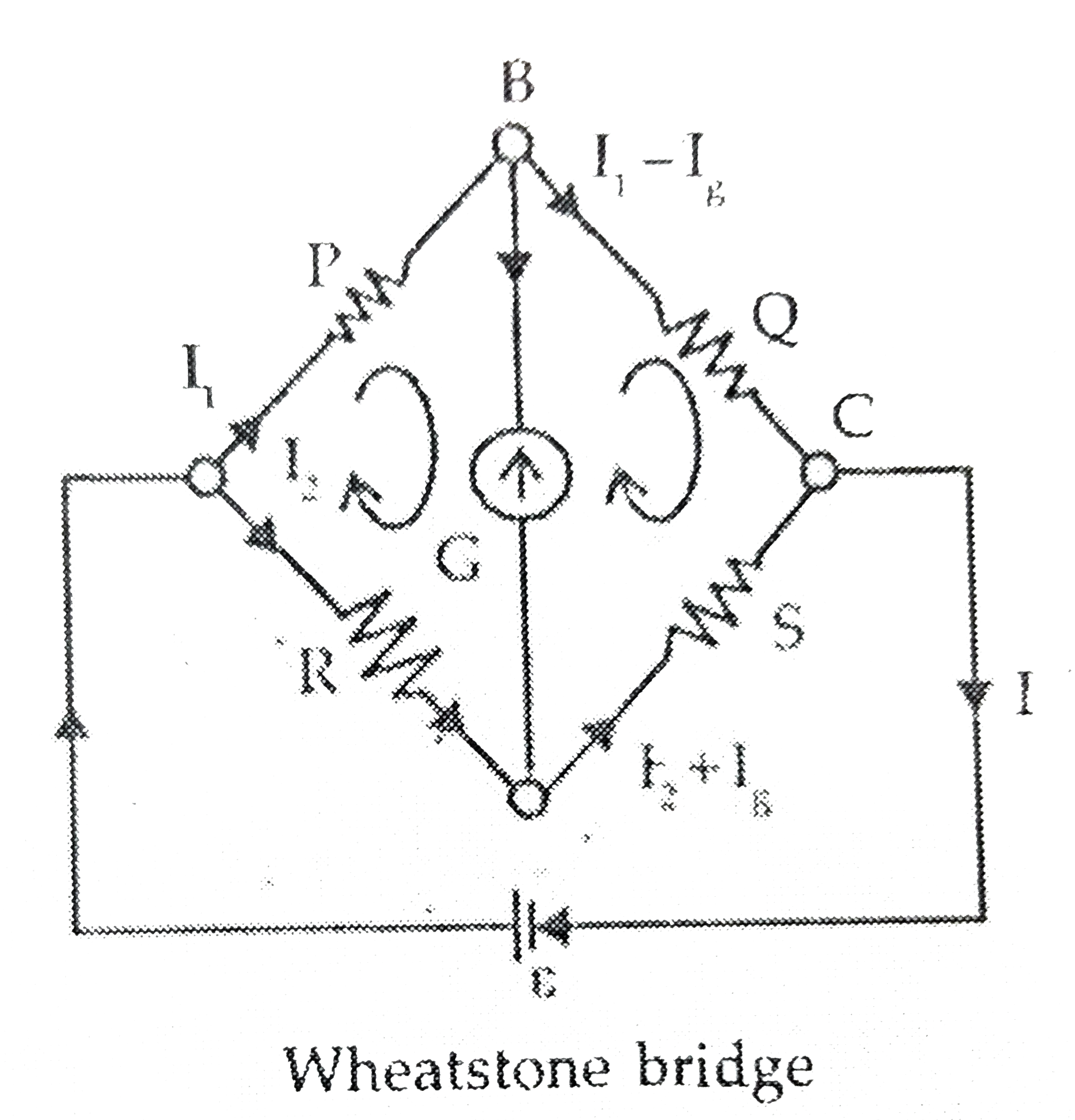
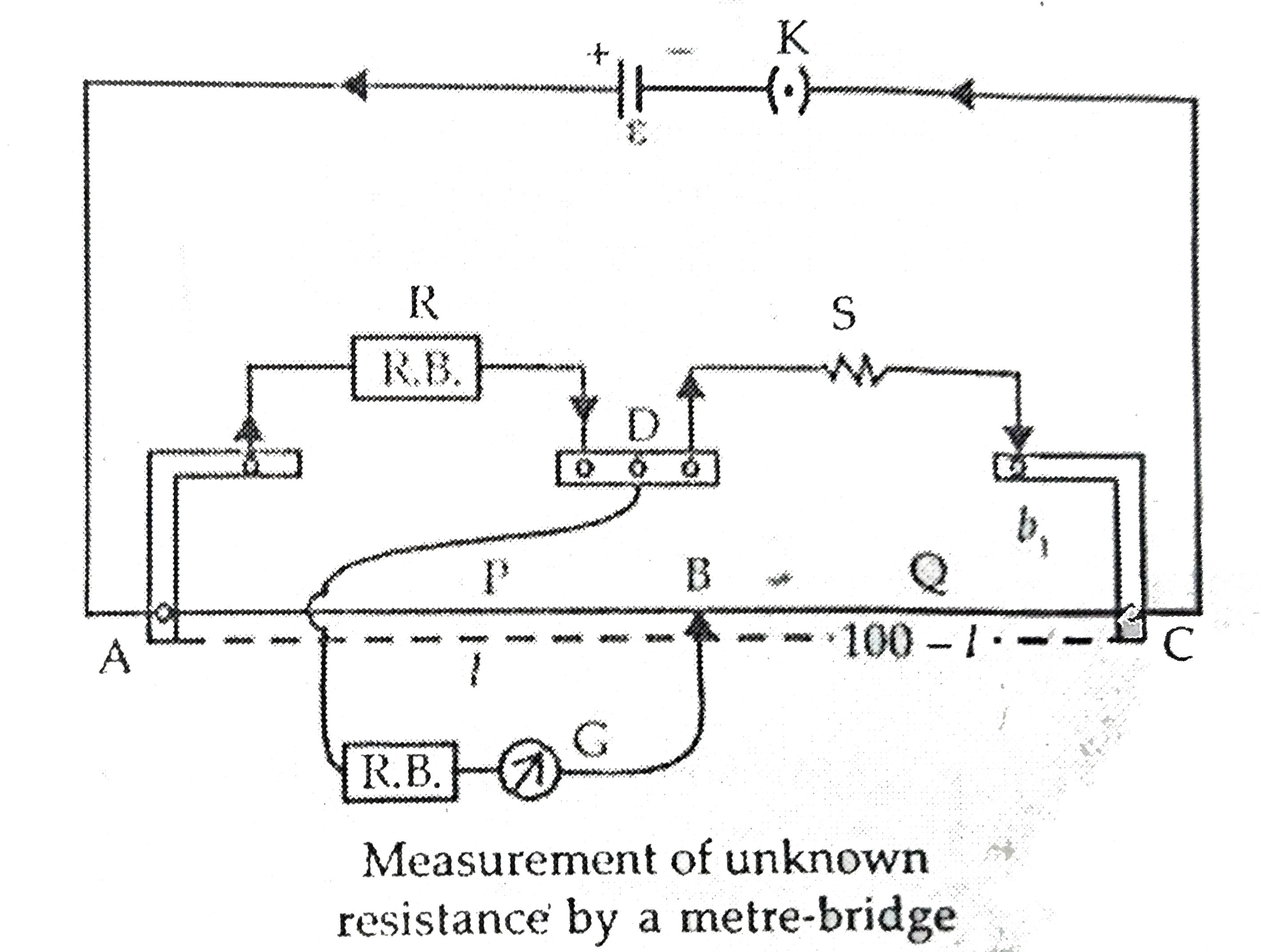
|
Updated on:21/07/2023
Similar Questions
Knowledge Check
- Question 1 - Select One
Device used to control the current in an electric circuit is
AtransformerBvoltmeterCrheostatDgalvanometer - Question 2 - Select One
The device used to measure electric current in a cir-cuit is called _____
AspeedometerBammeterCvoltmeterDkilowatt hour meter - Question 3 - Select One
Device used to regulate the current in an electric circuit is
AtransformerBvoltmeterCrheostatDgalvanometer
With the help of circuit diagram, explain how a meter bridge can be used to find unknown resistance of a given wire?
View SolutionIn the circuit shown in figure-3.175, find current in 4Ω resistance by using. Thevenin's Analysis.
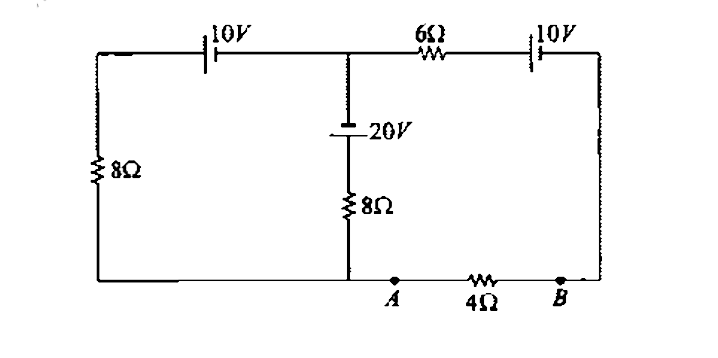 View Solution
View SolutionIn the circuit shown in the adjoining figure, the current between B and D is zero, the unknown resistance of
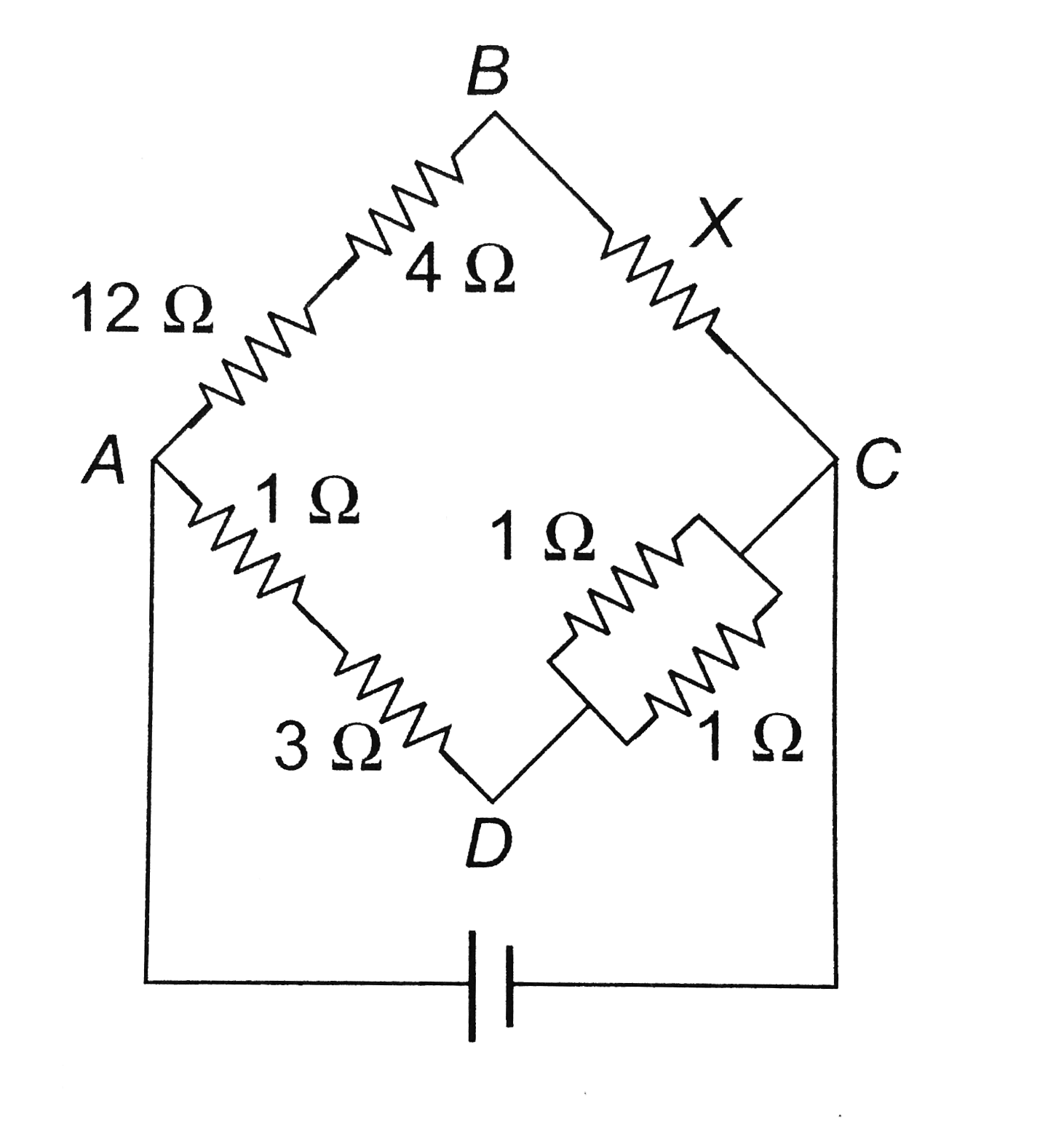 View Solution
View SolutionThe device that can be used to detect the presenceof current in a circuit is _____
View SolutionA device that can be used to produce an electric current in a circuit is
View Solution


